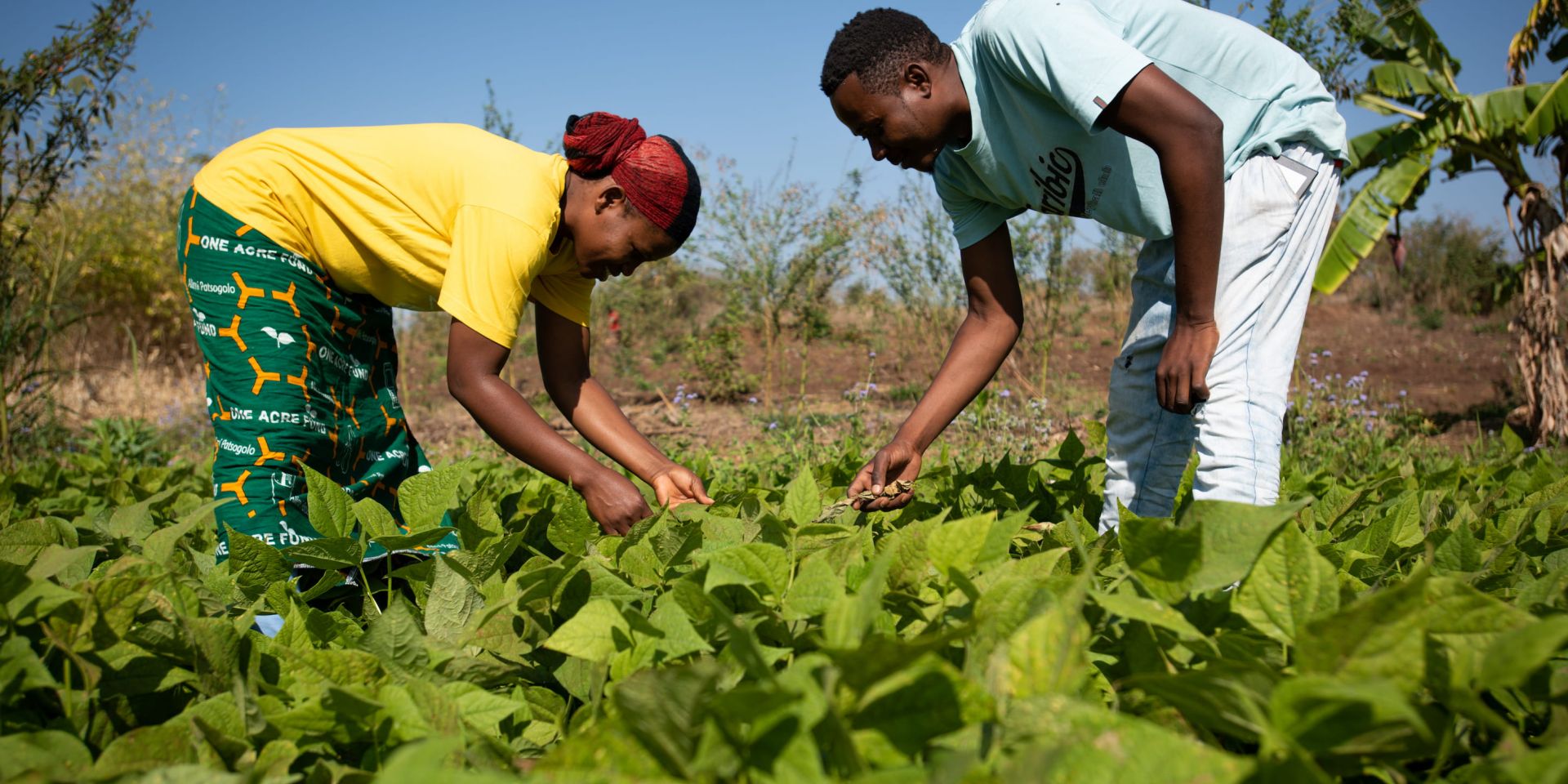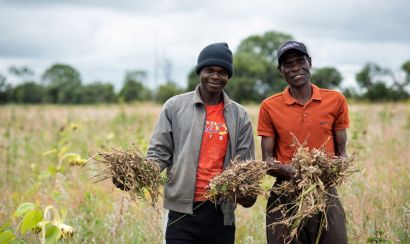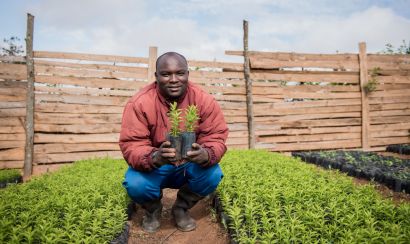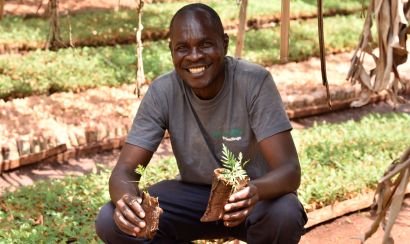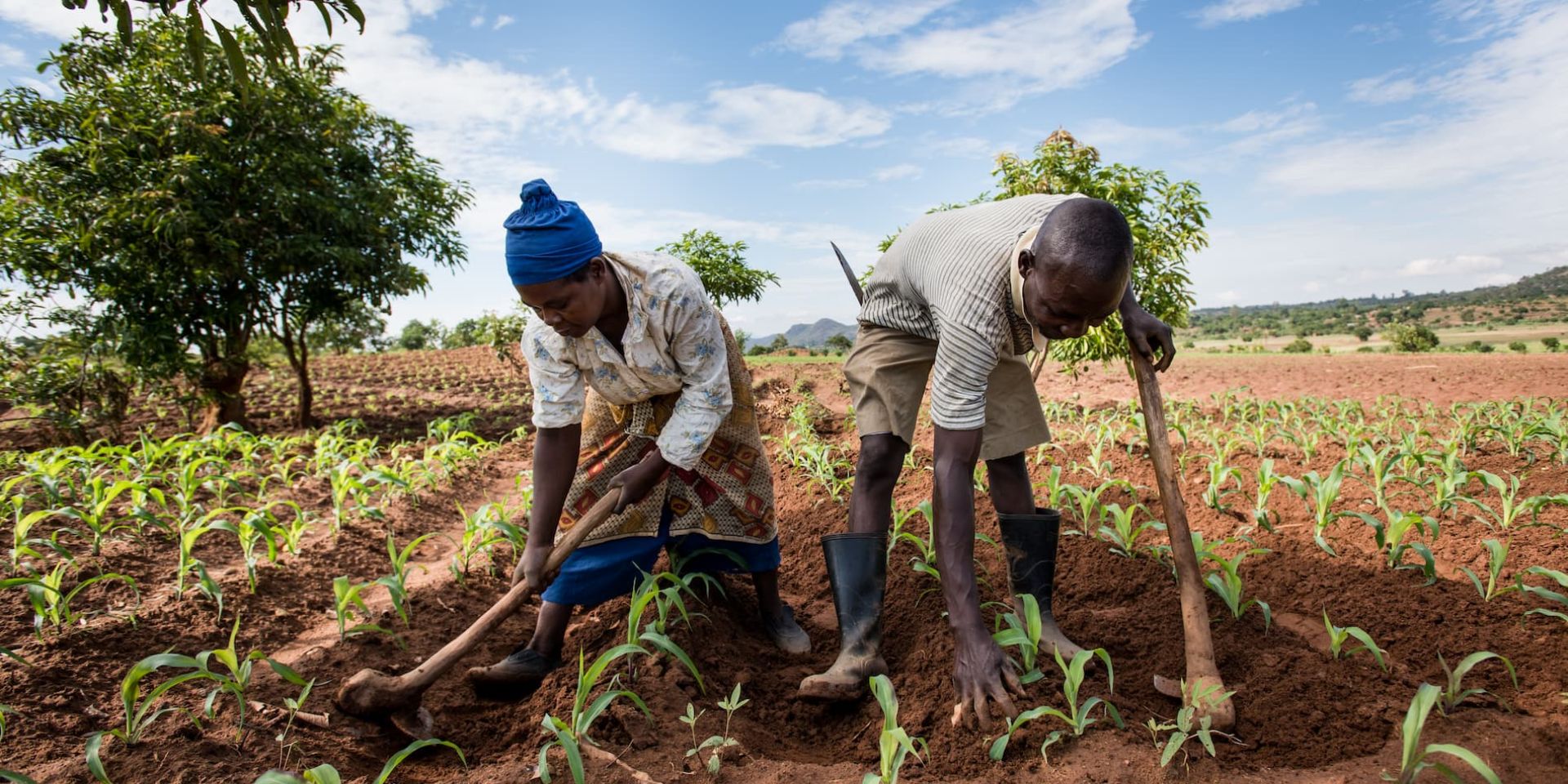Why Climate-Smart Agriculture Is So Important For Smallholder Farmers
Climate-smart agriculture helps farmers adapt their farming practices with the goals of:
- Increasing their harvests
- Building their resilience in the face of climate-related shocks
- Reducing their impact on the environment
For the smallholder farmers One Acre Fund works with, climate-smart agriculture includes the introduction of farming methods like composting, mulching, crop diversification and intercropping and box ridges and furrows to capture run-off and keep moisture in the soil – all techniques that help maintain and boost yields while tackling land degradation and improving soil health . Our approach to climate-smart agriculture also champions optimized planting trainings that encourage strategic tree planting and farming drought-resistant crops.
Malawian farmer Handson John has been enrolled with One Acre Fund for five years, growing maize, soya, pigeon peas, ground nuts, and pumpkins. Last year, he experienced climate change-induced extreme weather conditions that caused him to lose half his crop. Despite that, he says he feels encouraged about the next season, because of the new climate-smart practices One Acre Fund recently taught him.

“Making and using compost and planting trees help retain moisture in the soil. I have grown trees before, but compost is new to me. I usually plant with boxed ridges to save soil moisture. It’s a beneficial tactic, especially when there’s drought.”
Building household resilience
Smallholders like Handson contribute significantly to feeding their communities. With the right resources, they can not only produce more, but also higher quality crops.
Learn more about how we’re helping smallholders adopt climate-smart agriculture:
Diversification
Crop diversification increases the number of different crops grown simultaneously, raising productivity and profits by reducing production costs. It also protects against commodity price fluctuations associated with farming one crop, and provides resilience to highly variable weather conditions.
This year in Malawi, we introduced “winter” beans to our offerings as part of a crop diversification trial. Typically smallholders in Malawi, who mostly depend on rain to water their fields, are only able to farm during one season of the year. However, during the winter months, portions of the country at higher elevations receive enough moisture to grow crops like beans through mist and light rains, and less of the moisture evaporates during the colder temperature months. Beans are also well suited for rotation farming with crops like maize, and produce root nodules that fix nitrogen into the soil, which improves soil health.
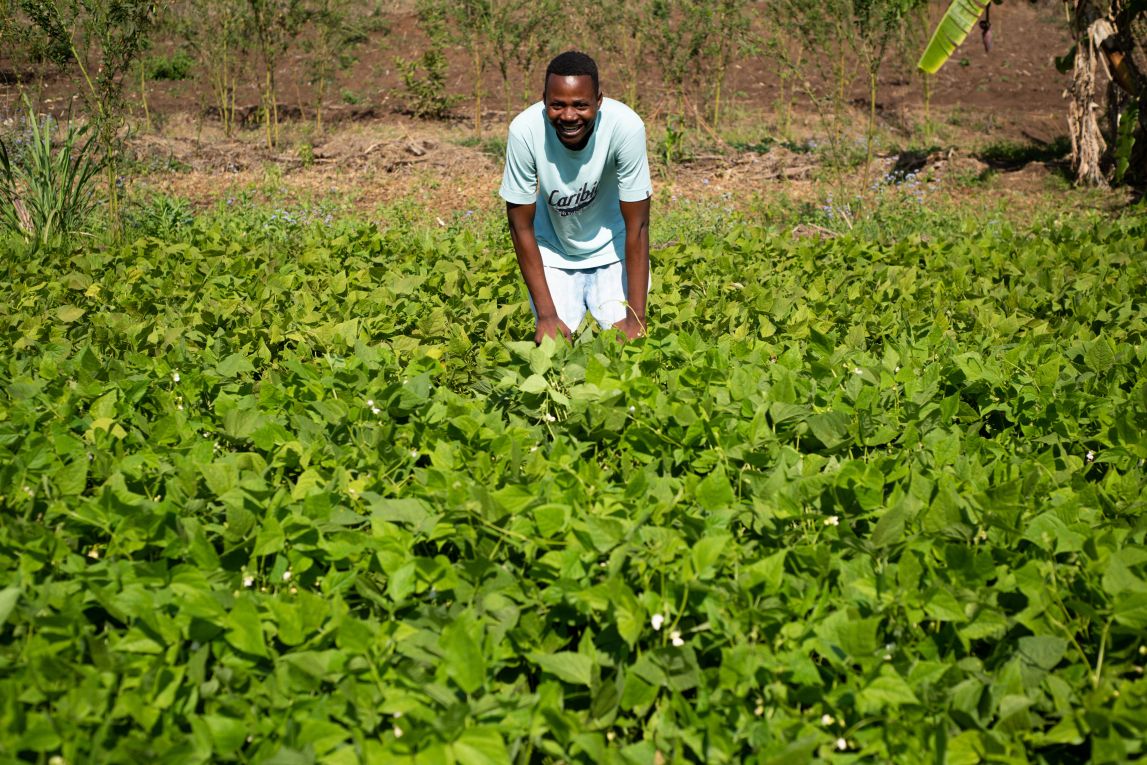
“I was motivated to do winter cropping because I can sell the beans during a different season, providing me with an extra source of income. The beans are also more tolerant to the weather when compared to maize.”
Composting
Another helpful practice is composting, which recycles organic matter, such as leaves and livestock waste, into valuable manure. Good composting helps restore soil nutrients, and can also help mitigate the impact of droughts by helping retain soil moisture.
In Kenya this year, it has been drier than usual for Julius Ilamiya; the rains came late and were insufficient. “I was trained to make and use compost which helps with soil moisture retainment, enabling the crop to perform well despite reduced rainfall,” Julius says. “My neighbors can’t understand why my farm is doing so well, but I share my knowledge with anyone interested.”
Tree planting
Shifting from crop-only farms to farms that include trees (a practice known as agroforestry) enhances farm resilience by preventing soil erosion, improving water absorption, and raising productivity.
Another Malawian farmer, Lucy Ngungu, says she bore out the difficult 2022 cropping season by adopting the ‘future farm’ method that we’re encouraging farmers to adopt — this method emphasizes combining practices such as intercropping, rotation farming, agroforestry, and composting.
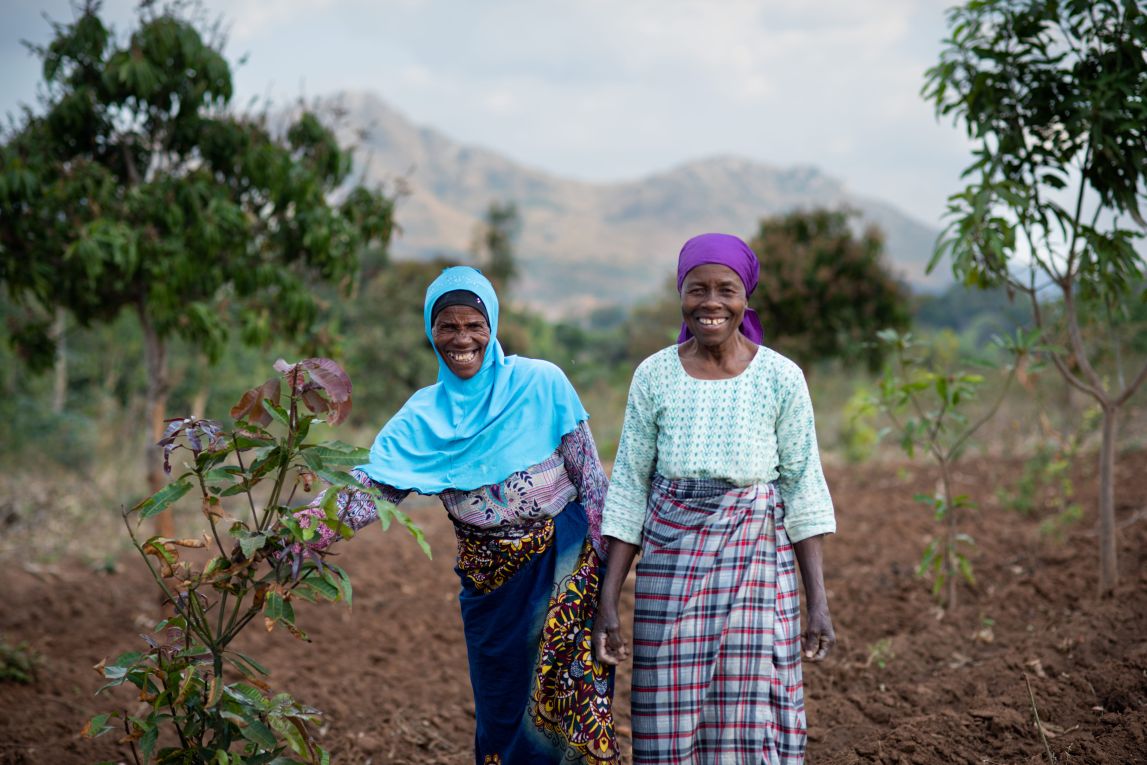
“I planted trees to restore soil fertility and preserve moisture; tree leaves also help with composting. I learned how to use maize stalks and intercropping to boost production. The future farm method improves soil fertility. I now know that maize crops do well with some trees.”
Closing knowledge and funding gaps
We know that climate-smart agriculture provides a path to more resilient, responsive agriculture. And more resilient, responsive agriculture is critical if we’re to achieve both food security and more sustainable food systems in our lifetimes. But we need far more investment here. Currently only 1.7% of global climate finance currently targets smallholders (IFAD) even though there are 608 million smallholder farms feeding billions of people around the world (FAO).
We’re calling on world leaders to change this. Discover more about our involvement at the UN's climate conference, COP27, here >
